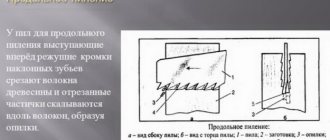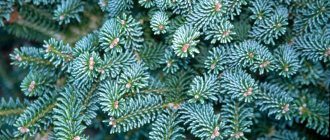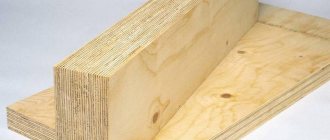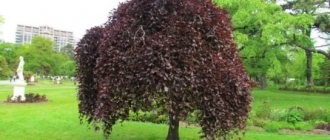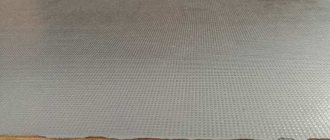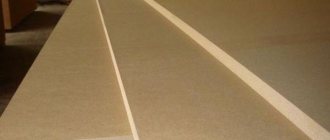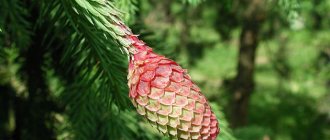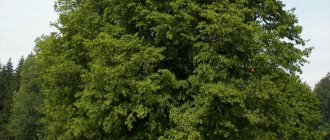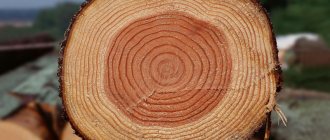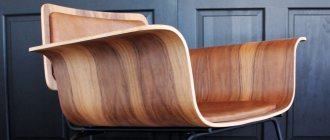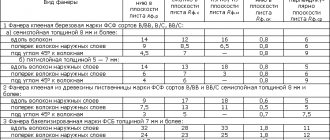Previously, balsam fir was perceived more as a source of light wood and valuable oil. Nowadays, the elegant coniferous tree is deservedly in demand in landscape design. Excellent decorative properties made the slender plant an attractive element for group or single plantings.
Balsam fir - description
The North American gymnosperm plant abies balsamea differs in appearance from other members of the pine family. First of all, let’s highlight the elegant flat needles decorated with white stripes. Balsam fir has vertically growing cones of an interesting purple color. There are giant tree species up to 35 m tall and decorative slow-growing species not exceeding half a meter, which are valuable for use in landscape design.
Balsam fir - characteristics
There are about two dozen, both dwarf and powerful tall varieties of this tree, each of which has interesting individual differences. Balsam fir abies balsamea stands out among other conifers with the following characteristics:
- The tree has superficial roots.
- The lateral roots of balsam fir are highly developed.
- The bark is relatively thin, smooth in texture on young plants, becoming scaly with age.
- Bubbles containing resin appear on the surface of the bark.
- The height, width and shape of the crown varies depending on the variety.
- Frost resistance is high, in many varieties up to -40°.
- The growth per year for vigorous plants reaches 30 cm, for dwarfs it is 3-4 cm.
- The length of flat needles is up to 25 cm.
- The tips of the needles are rounded or notched.
- Cones up to 10 cm long, fruit diameter up to 2.5 cm.
- Balsam fir bears fruit with brown seeds with brown-purple wings.
Where does balsam fir grow?
The beauty abies balsamea is suitable for a relatively cool climate on wetlands, peat bogs, and mountain slopes. Under favorable conditions, a coniferous tree has a life expectancy of up to two hundred years. In the Ukrainian steppe and forest-steppe zone, especially on sand, it is problematic to grow the plant. The balsam fir tree develops better on moist loams and floodplain soils. The North American guest grows normally in Russia to the latitude of St. Petersburg and east to the Sverdlovsk region.
Korean and balsam fir - differences
Due to the presence of many types of conifers, gardeners often confuse plants by buying re-cultivated varieties from unscrupulous nurseries. There is balsam fir, single-color fir, mountain fir, Caucasian fir, Greek fir and others. The Korean variety abies koreana, due to its high decorativeness, is often found at sales next to its North American relative abies balsamea, so it is advisable to know its main differences:
- The crown of Korean fir is cone-shaped or spherical.
- The bark is reddish or ash-chestnut in color, and in old trees it is covered with cracks.
- The needles are two-colored - the underside is silver, and the top is emerald in color.
- Saber-shaped needles, up to 2 cm, soft.
- The fruits are lilac-violet and grow vertically.
- The dwarf plant abies koreana is slow growing, 0.3-7 m high.
- Wild growing forms of Korean fir are tall (up to 15 m).
Balsam fir - varieties and types
The most popular and in demand in landscape design are the dwarf forms of this coniferous tree. The most common varieties of balsam fir:
- Balsam fir Brilliant
is a dwarf variety, the diameter of a beautiful cushion-shaped crown is up to 65 cm, height up to 0.5 m, growth up to 4 cm, needle length up to 20 mm. - Abies balsamea Kiwi (Kiwi)
- a shrub up to half a meter high, the needles are dark green in color, the needles are short and shiny, the crown of young trees has a bluish tint. - Hudsonia fir (Hudsonia)
is a mountain dwarf variety of plants with short needles, the needles are flat and wide, they are blackish-greenish above, with a bluish tint below. - Balsam fir Piccolo
is a miniature form 30-50 cm high, the crown is dark green, round, young needles are light green in color. - The Argentea variety
is a dwarf balsam fir, the height of which does not exceed 3 m, beautiful needles up to 4 cm, silver-blue, almost white at the tips.
Reviews from gardeners
michurinka
In general, balsam fir is resistant and can grow in the sun, but all attempts to cover conifers more often lead to problems than help... Plant it and don’t worry about it (water it properly before winter if there is no rain).
Source: forum.tvoysad.ru
Natashen
I'm in love with this tree. When I saw it at the garden center, I fell in love. Completely unpretentious and amazingly beautiful. Last year there was one cone, but this spring a whole bunch has grown.
Source: www.forumhouse.ru
How to plant balsam fir?
Working with planting material requires a responsible approach. Only with proper planting and care will balsam fir develop normally, delighting the owners of the site with its decorative appearance. Plants with bare roots are planted in late autumn or early spring. Abies balsamea purchased in containers can be planted throughout the year until the soil freezes. The best option is to move the seedlings to a permanent place in the spring into a properly prepared hole.
Planting balsam fir:
- For group dense planting, we place the center of the holes every 2.5 m, the distance in a loose group is up to 3.5 m, the interval for single placement in alleys is about 4-5 m.
- The parameters of the planting hole are 50x50 cm or 50x60 cm, its size must correspond to the root system plus 20 cm in all directions.
- The optimal age of a fir seedling is 5-10 years.
- When planting in heavy soil, we arrange in the hole a drainage layer of fine crushed stone or broken brick up to 20 cm thick.
- Sprinkle mineral fertilizers over the drainage.
- Next, pour a high-quality soil mixture (about 10 m).
- The root collar of the fir is installed level with the soil.
- After filling the hole, we water it, pouring out up to 40 liters of water.
Soil for balsam fir
This plant does not like soil compaction. Balsam fir Nana, Piccolo, Kiwi or another variety is best planted in soil rich in organic matter with a pH of 4-6.5. We prepare the soil for the planting hole according to the following recipe:
- clay – 2 parts;
- humus (leaf soil) – 3 parts;
- peat – 1 part;
- sand – 1 part;
- sawdust (on heavy soil) – up to 10 kg.
Landing
In order for balsam fir to take root and begin to grow actively, it needs to be planted correctly. Typically, work is carried out in spring and autumn, and a shaded place is chosen. Before planting, the soil should be well prepared.
Important! The tree does not like dry air and heavy pollution, so it will not grow near highways.
Preparing soil and seedlings
A plant seedling is selected with good winter hardiness, without defects and signs of disease, so that it does not die in the first year. That is why it is worth consulting with a specialist and choosing the ideal variety for your area. Be sure to inspect the soil in containers to ensure it is moist and clean.
The place for a young seedling is of great importance. It should be in the shade and protected from drafts. You should choose and plan your composition in advance to get the desired result.
Step-by-step instruction
It is preferable to plant all types and varieties of fir on moist, fertile soils. It would be useful if the soil allows moisture to pass through, so it needs to be dug up before planting.
Planting process:
- Choose a warm and cloudy day for work, or even rain.
- It is better to prepare the place in advance. The depth of the pits is 60–80 cm and width 60 cm, and the distance between them is 4 m.
- Fill the holes well with water.
- Place a layer of drainage at the bottom so that water does not stagnate at the roots.
- Fill half of the hole with a soil composition consisting of humus, sand and clay, as well as compost and sawdust.
- After a week, you can begin planting.
Balsam fir - care
Fertilizers (Epin, Megafol) with optimal watering regimes help to grow strong and durable trees. All varieties of balsam fir are considered frost-resistant, but they require increased attention and light shelter when young. In extreme cold, seedlings in open areas freeze to the ground level. Even resistant conifers protect against harmful insects and fungi.
For aphids, spider mites and silkworms, biological insecticides are used - “Lepidotsid”, “Aktofit” or chemicals. Domestic abies balsamea should be treated with fungicides (Topsin, Fundazol and analogues) against the following diseases:
- root rot;
- rust of cones and needles;
- brown Schutte;
- bacteriosis;
- rotten.
How to prune balsam fir?
It is better to remove branches on coniferous trees before active sap flow begins. In the question of how to trim frozen branches of balsam fir and shape the crown, we are guided by the following principles:
- It is not advisable to cut branches at temperatures below 5°C or above +25°C.
- When pruning in the rainy season, the risk of plant infection is higher; it is better to choose dry, fine days.
- First, dry growth, broken and severely damaged branches are removed.
- The formation of fir is carried out by pinching young growth.
- The branches are shortened to 1/3 the length of the annual growth.
- Don't leave any knots.
- Wounds on fir trees are not covered up; the resin itself will cover the cut site.
Diseases, pests and methods of combating them
Fir trees are distinguished by their endurance, but still they, like others, are attacked by pests and get sick. Dangerous pests are:
- fir hermes;
- cone moth;
- bark beetles;
- wireworm;
- shoot moth.
If the needles of a tree begin to turn yellow, this indicates an attack by Hermes fir. Female insects become active in early spring, so at the beginning of the season, massive spraying of trees with Rogor or Antio liquids should be carried out. The solution is made in the following proportion: 20 g of the drug is taken per 10 liters.
Insecticides also stop the reproduction of shoot moths, bark beetles and pine budworms. The treatment is carried out during the period when the caterpillars emerge and is repeated after 2–3 weeks.
Hermes fir is considered one of the most dangerous types of aphids, and if the fight is not started in time, the tree will die
The most dangerous diseases for fir trees are:
- root cancer;
- browning;
- rust, or rust fungus;
- brown shutte.
Diseases can be avoided by spraying the crown with pesticides and treating with cold and hot fog. In case of yellowing of needles and the appearance of fungi, it is recommended:
- remove affected branches;
- treat the cuts with garden varnish;
- burn removed branches and pine needles;
- spray the crown with 2% Bordeaux mixture.
The causative agents of diseases can be non-compliance with planting conditions, seedlings purchased already diseased, lack of moisture, pest attacks
Transplanting balsam fir
The plant is transferred to a new site in early autumn, when the heat has already subsided, but a couple of months before the soil freezes. In old and powerful trees, the root system is taprooted, goes deep down and is severely damaged when dug up. Balsam fir Nana, Argentea, Kiwi or another variety takes root better when carefully transferred into a planting hole with a lump of soil.
How to transplant fir:
- We retreat 40 cm from the trunk and dig holes around the circumference with a shovel.
- We lift the earthen lump with a shovel on one side.
- We remove the rhizome with a lump out.
- It is better to transport the fir to a new location using a wheelbarrow, placing its roots inside on a piece of thick fabric.
- When transplanting into a new hole, straighten the roots protruding from the coma.
- We provide abundant watering.
Balsam fir - propagation
If the technology is followed, summer residents can easily obtain their own seedlings of coniferous plants in any quantity. If you like Kiwi balsam fir or another tree of this species, then use cuttings or seed propagation. The first method is faster and allows you to obtain varietal seedlings that are 100% identical to the mother tree.
Fir cuttings:
- In spring, during cloudy times, 5-8 cm cuttings of one-year growth are cut from young trees.
- Select branches with one upper bud.
- It is better not to cut the material for propagation into a sector, but to tear it off with your hands with a small “heel” (a piece of bark).
- Burrs are removed from the heel.
- For 6 hours, the material is placed in a “Fundazol” solution.
- The composition for cuttings of balsam fir is humus, sand and leaf soil (1:1:1).
- After planting, the vessel with the cutting is covered with a transparent plastic cap.
- For the winter, the containers are moved to the basement.
- Normal roots appear on fir only in the second year; callus formation occurs in the first season.
Seed propagation of fir:
- Unripe cones are dried.
- Remove the seeds.
- Seed stratification is done in the refrigerator.
- Sowing material in April.
- The soil for sowing is turf soil with sand.
- The crops are covered with film.
- Germination time is up to a month.
- Transplanting fir from a schoolchild in the second year.
Characteristics of culture
Fir of this species prefers loamy, moist and well-drained soils. It can grow on soils containing sand and peat, but the growth rate in such conditions slows down sharply. The plant will be small. Fir tolerates shade well and develops best in areas open to light.
Balsam fir is very sensitive to polluted or smoky environments, so it does not grow well within the city. It feels best in a warm environment and can withstand freezing temperatures, even frosty winters.
Balsam fir in landscape design
Interspersed with coniferous trees look more interesting in large areas. The growth vigor of seedlings, the shape of the crown, and the color of the needles must be taken into account. Balsam fir looks interesting together with deciduous shrubs; a hedge made from this plant will help to delimit the dacha into zones or effectively separate it from neighboring buildings. Rounded plants are suitable for alpine slides, rock gardens, and rock gardens. A good option is to plant decorative fir near artificial reservoirs.
Application of the plant
Balsam fir is popular not only because of its beautiful appearance, but also because of its beneficial properties.
Surely many people are familiar with the term fir oil. Useful oil was developed several centuries ago. Fir oil is extracted from various varieties, and balsam fir is no exception. This oil has various properties:
- anti-inflammatory;
- disinfectant;
- painkillers;
- bactericidal;
- warming up and so on.
If you are not ready to produce such oil yourself, you can always buy it in pharmacies or stores.
In the landscape, balsam fir is often used to replace the usual hedge. In addition, the tree looks amazing with various compositions made of stone or other plants and flowers. It has a huge number of decorative qualities: elegance, evergreen color, beauty of color, beautiful design and many others.
To summarize, it is worth saying that balsam fir does not require special care, but can decorate any garden and make any composition even better. Such a shrub can not only improve its appearance, but can also be used for health. Do not be afraid to grow fir, because it only takes a few minutes a week to give the plant, and it will grow for several more centuries.
Balsam fir at home
For a small garden, another option is suitable - growing dwarf forms in a pot. Balsam fir Piccolo, Hudsonia, Kiwi and others are suitable. For convenience, you can make a stand on wheels, which will make it easier to move the container around the site. Remember that soil freezing in a pot occurs faster than outside, so it is better to bring trees indoors in winter. To control the height and shape of the crown, pruning is carried out regularly. It is advisable to spray fir in the summer; watering is carried out moderately at the root.
